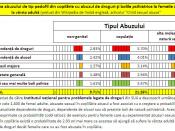Introduction In the past ten years, there has been a growing recognition of child physical, emotional, and sexual abuse. This recognition has led to more research being conducted to find out the long-term effects of different types of abuse on children, as they become adolescents and adults. One such study that was conducted took place in New Zealand and consisted of 1,000 children being studied from birth until age 16. At the age of eighteen, the adolescents were given a multitude of tests to determine the degree of the abuse, how the abuse had affected the child, and what long term psychological problems were present (Fergusson, Horwood & Lynskey, 1996, Objective Section, 1). From birth to age 16, extensive research and information was collected on the child's family, social, economic, and related areas. (Fergusson, Lysnskey, & Horwood, 1996, 1355). At the age of 18, the adolescents were interviewed by administrators in 2-hour sessions on a wide range of mental health issues (Fergusson, Lysnskey, & Horwood, 1996, 1356).
Based on the answers to these questions the administrator would then proceed forward and ask more questions or end the interview. The findings of this research found that nearly 25% of females and 10% of males reported exposure to child sexual abuse by the age of 16 (Fergusson, Lysnskey, & Horwood, 1996, 1355). Administrators also noticed that most often the children who had experienced some type of abuse came from "home backgrounds characterized by marital dysfunction, impaired parenting, impaired parent-child relationships and from families in which there are parental adjustment problems" (Fergusson, Lysnskey, & Horwood, 1996, 1355). Results were conclusive of those who experienced child sexual abuse did tend have increased risks of psychiatric disorders. Another study that was recently conducted concluded with somewhat different results. In this study of 237 adult women,



!!!!
I really like that you stated all of your sources. Also it was very imformative!! Thanks!
5 out of 5 people found this comment useful.